Crested Gecko
- March 7, 2024
- 0 comment
The Crested Gecko, scientifically known as Correlophus ciliatus, is a charming reptile native to New Caledonia, a group of islands in the South Pacific. Known for its distinctive fringed crest running from its eyes to its tail, this gecko has gained popularity as a fascinating pet choice. Crested Geckos are arboreal, meaning they primarily inhabit trees, and they have adapted well to living in captivity.

They boast a gentle temperament, making them suitable pets for both beginner and experienced reptile enthusiasts. With their striking appearance and relatively easy care requirements, Crested Geckos have become a beloved addition to many households.
| Specification | Description |
|---|---|
| Scientific Name | Correlophus ciliatus |
| Common Name | Crested Gecko |
| Native Habitat | New Caledonia, South Pacific Islands |
| Size | 6 to 10 inches in length |
| Lifespan | 15 to 20 years in captivity |
| Behavior | Nocturnal, arboreal, gentle temperament |
| Crest Feature | Fringed crest from eyes to tail |
| Diet | Omnivorous – consumes insects, fruits, and nectar |
| Housing | Vertically oriented terrarium with climbing branches |
| Temperature Range | 72°F to 80°F during the day, slight drop at night |
| Humidity Range | 60% to 80% |
| Care Level | Moderate |
| Suitability as Pets | Beginner-friendly, popular choice among reptile owners |
| Conservation Status | Not listed as endangered, captive breeding is common |
A Fascinating Reptile Companion
Crested geckos, scientifically known as Correlophus ciliatus, are captivating reptiles native to New Caledonia, a group of islands in the South Pacific. These unique creatures have gained popularity as pets due to their gentle demeanor, striking appearance, and relative ease of care. In this article, we’ll explore everything you need to know about crested geckos, from their natural habitat to caring for them as pets.
Crested geckos, also known as eyelash geckos, were thought to be extinct until rediscovered in 1994. Since then, they have become increasingly popular in the reptile trade due to their charming personalities and low-maintenance care requirements.
Natural Habitat and Behavior
Natural Habitat
Crested Geckos are native to the lush rainforests of New Caledonia, a group of islands in the South Pacific. In their natural habitat, they inhabit tall trees and dense vegetation, primarily living in the canopy. New Caledonia’s tropical climate provides the ideal conditions for Crested Geckos, with warm temperatures and high humidity levels year-round.

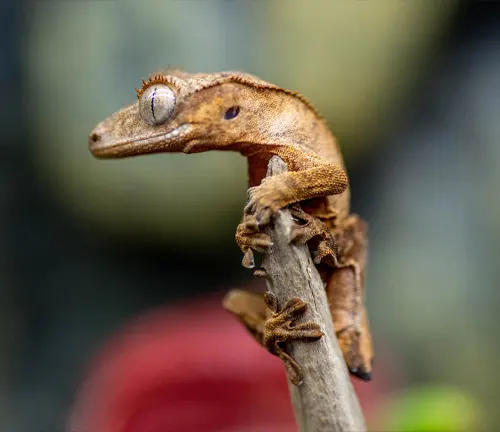
Behavior
Crested Geckos are primarily nocturnal, meaning they are most active during the night. During the day, they typically hide in tree crevices, leaf litter, or other shaded areas to avoid predators and conserve energy. At night, they emerge to hunt for food and engage in social behaviors such as mating rituals.
Crested Geckos are arboreal creatures, meaning they are well-adapted to life in trees. They have specialized toe pads with microscopic hairs that allow them to climb and grip onto smooth surfaces with ease. Their prehensile tails also aid in balancing and navigating their arboreal environment.
Physical Characteristics
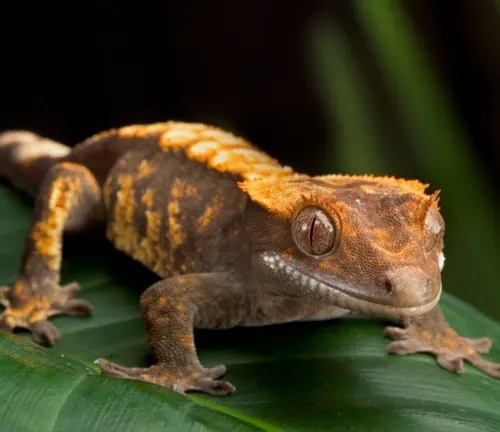
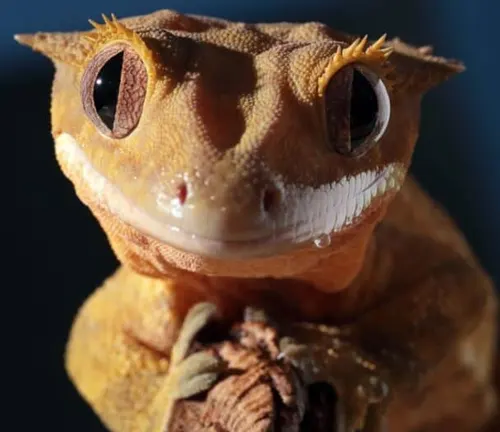
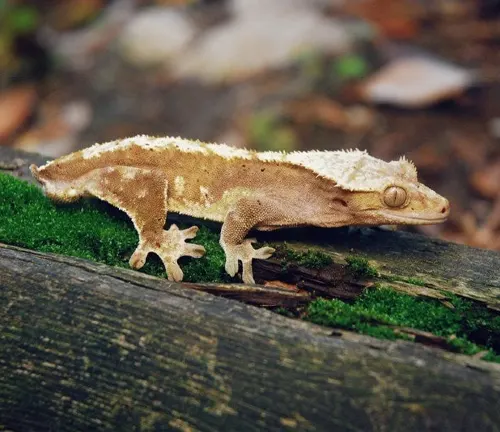
- Size: Crested Geckos are considered medium-sized geckos, typically ranging from 6 to 10 inches in length when fully grown. Males tend to be slightly larger than females, but the size difference is minimal.
- Body Shape: Crested Geckos have a slender and streamlined body shape, with a relatively flat profile. They have a triangular head with large, expressive eyes and a rounded snout.
- Skin: The skin of Crested Geckos is semi-translucent and covered in small, granular scales. Unlike many other gecko species, Crested Geckos lack eyelids and instead have a transparent membrane over their eyes, which they periodically lick to keep clean.
- Crest: One of the most distinctive features of Crested Geckos is the prominent crest that runs from above their eyes down to the base of their tail. This crest consists of soft, fringed spines that give the gecko a unique and striking appearance.
- Coloration and Patterns: Crested Geckos exhibit a wide range of colors and patterns, including shades of green, brown, red, orange, and gray. They may have solid colors, banded patterns, or spots and blotches, with some individuals displaying vibrant hues or unique morphs bred in captivity.
- Tail: Crested Geckos have a prehensile tail that they use for balance and gripping onto branches while climbing. Their tails are typically long and slender, with a tapering tip. In defense, Crested Geckos can detach their tails as a distraction mechanism, which will regenerate over time.
- Toe Pads: Each toe of a Crested Gecko is equipped with specialized adhesive pads covered in microscopic hairs called setae. These toe pads allow them to climb smooth vertical surfaces and cling onto branches with remarkable agility.
Crested Gecko Care Guide
Housing
When it comes to housing Crested Geckos, it’s essential to provide them with a suitable enclosure that mimics their natural habitat. A vertically oriented terrarium is ideal, as Crested Geckos are arboreal and require ample vertical space for climbing. The enclosure should be spacious enough to allow for natural behaviors such as exploring and hunting. Provide plenty of climbing branches, vines, and foliage for enrichment and hiding spots. Additionally, ensure the enclosure has proper ventilation to prevent the buildup of humidity and respiratory issues.


Temperature and Humidity
Maintaining optimal temperature and humidity levels is crucial for the health and well-being of Crested Geckos. The temperature in the enclosure should range between 72°F to 80°F during the day, with a slight drop at night. Use a combination of under-tank heating pads or low-wattage heat bulbs to achieve the desired temperature gradient. Humidity levels should be maintained between 60% to 80% to replicate their natural rainforest environment. Mist the enclosure regularly to provide humidity and ensure your gecko has access to a water bowl for hydration.
Diet and Nutrition
Crested Geckos are omnivores and require a balanced diet to thrive in captivity. A staple diet for Crested Geckos consists of commercially available Crested Gecko diet, which comes in powder form and can be mixed with water to form a paste. This diet should be supplemented with live insects such as crickets, dubia roaches, and mealworms to provide essential protein and nutrients. Additionally, offer occasional fruit treats such as mashed bananas or pureed mangoes for variety. Dust food items with calcium and vitamin supplements several times a week to prevent nutritional deficiencies.
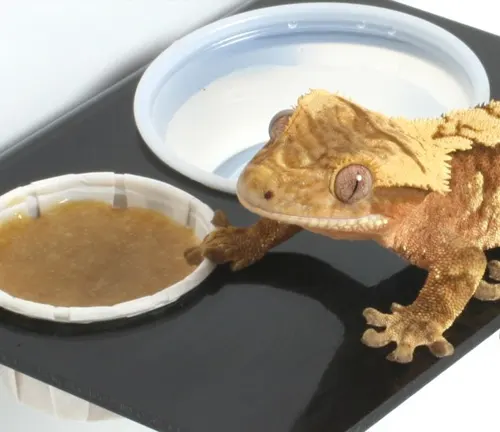
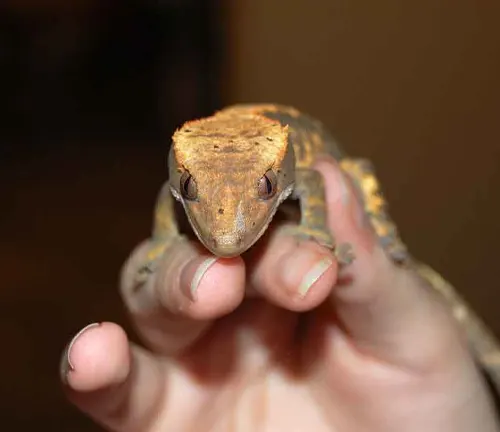
Handling and Interaction
Crested Geckos can be handled gently and occasionally, but it’s essential to approach them with care to avoid causing stress or injury. When handling your gecko, support its body and avoid grabbing its tail, as it may detach as a defense mechanism. Start with short handling sessions and gradually increase the duration as your gecko becomes more comfortable. Always wash your hands before and after handling to prevent the transfer of bacteria. Remember that not all Crested Geckos enjoy handling, so pay attention to your gecko’s body language and respect its boundaries. Providing environmental enrichment and observing your gecko’s natural behaviors can also be rewarding forms of interaction.
Breeding Crested Geckos
Breeding Crested Geckos can be a rewarding and fulfilling experience for reptile enthusiasts. However, it requires careful planning, preparation, and knowledge of Crested Gecko biology and behavior. Here are some important aspects to consider when breeding Crested Geckos:
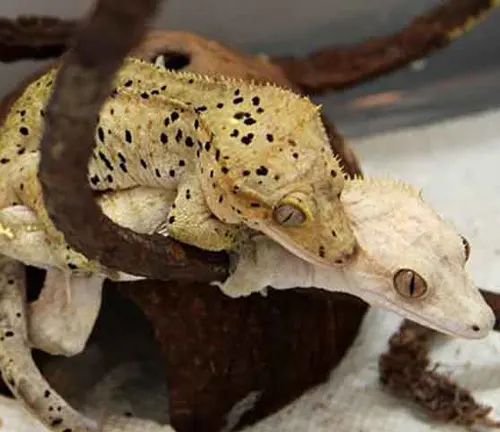
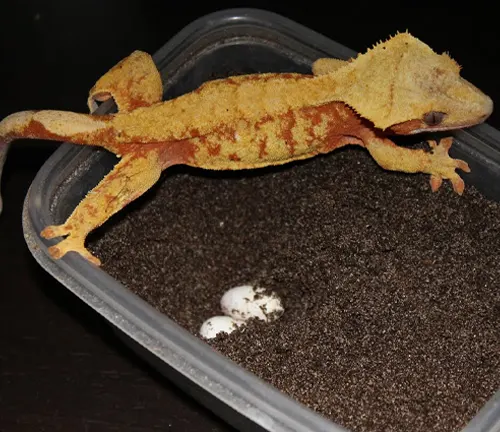
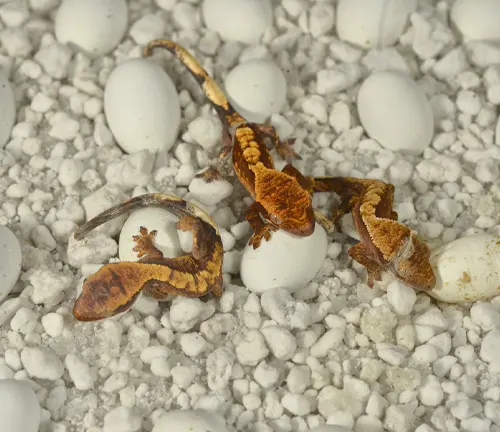
- Maturity: Crested Geckos reach sexual maturity at around 9 to 12 months of age, although some individuals may mature earlier or later. It’s essential to wait until both the male and female geckos are fully mature before attempting to breed them.
- Pairing: When selecting breeding pairs, it’s crucial to choose healthy individuals with desirable traits and characteristics. Avoid breeding Crested Geckos that are closely related to prevent inbreeding and maintain genetic diversity. Introduce the male and female geckos gradually and monitor their behavior to ensure compatibility.
- Breeding Season: Crested Geckos typically breed during the warmer months of the year, with peak breeding activity occurring in spring and summer. As the days lengthen and temperatures rise, male Crested Geckos become more active and may exhibit courtship behaviors such as head bobbing and vocalizations.
- Courtship and Copulation: Male Crested Geckos initiate courtship by displaying dominance and territorial behavior towards females. They may vocalize, head bob, and perform a ritualized dance to attract a mate. Once the female accepts the male’s advances, copulation occurs, usually lasting several minutes. It’s essential to provide a suitable breeding environment with ample hiding spots and privacy for the geckos.
- Egg Laying: After mating, female Crested Geckos will develop and lay a clutch of eggs approximately 20 to 30 days later. Provide a suitable nesting site such as a lay box filled with moist substrate to facilitate egg deposition. Females may lay multiple clutches throughout the breeding season, with each clutch containing one to two eggs.
- Incubation: Crested Gecko eggs should be carefully collected and transferred to an incubator set to the appropriate temperature and humidity levels. The optimal incubation temperature for Crested Gecko eggs is around 75°F to 80°F, with a humidity level of 80% to 100%. Eggs typically hatch after 60 to 90 days of incubation, depending on temperature and other environmental factors.
- Hatchling Care: Once the eggs hatch, carefully remove the hatchlings from the incubation container and transfer them to individual enclosures. Provide small, appropriately sized enclosures with hiding spots, climbing branches, and humidity levels suitable for hatchlings. Feed hatchlings a diet of small insects and commercially available Crested Gecko diet to promote growth and development.
- Health Monitoring: Monitor the health and well-being of breeding Crested Geckos throughout the breeding process. Ensure that they receive proper nutrition, hydration, and veterinary care as needed. Keep detailed records of breeding activities, egg laying dates, and hatchling development to track the success of breeding efforts and identify any potential issues.
Health Concerns and Common Issues
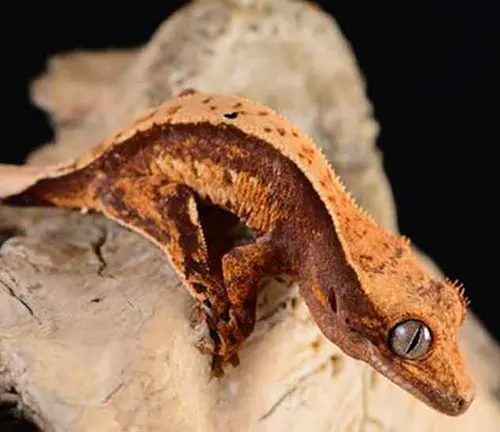
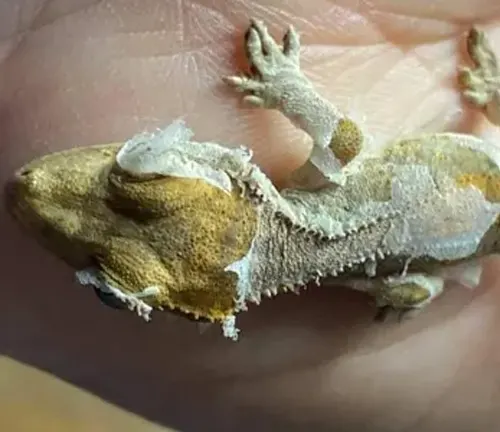

Crested Geckos are generally hardy reptiles, but like any pet, they can be prone to certain health concerns and common issues. Being aware of these potential issues and knowing how to address them is essential for maintaining the health and well-being of your Crested Gecko. Here are some health concerns and common issues to watch out for:
- Metabolic Bone Disease (MBD): MBD is a common issue in reptiles, including Crested Geckos, caused by a calcium deficiency or improper calcium-to-phosphorus ratio in their diet. Symptoms include lethargy, tremors, swollen joints, and deformities. Providing a balanced diet supplemented with calcium and vitamin D3, along with proper UVB lighting, can help prevent MBD.
- Respiratory Infections: Respiratory infections can occur due to poor husbandry practices, such as inadequate temperature or humidity levels, or exposure to drafts. Symptoms include wheezing, nasal discharge, open-mouth breathing, and lethargy. Proper husbandry, including maintaining optimal temperature and humidity levels, is crucial for preventing respiratory infections. If detected, prompt veterinary treatment with antibiotics may be necessary.
- Stuck Shed: Crested Geckos may experience difficulty shedding their skin, leading to stuck shed. This can occur due to insufficient humidity or dehydration. Stuck shed can constrict blood flow and lead to serious complications if not addressed promptly. Provide a moist hide or increase humidity levels in the enclosure to facilitate shedding. Gently soak the gecko in lukewarm water if necessary to help loosen stuck shed.
- Parasites: Internal parasites such as pinworms or protozoa can affect Crested Geckos, especially if they are wild-caught or housed with infected individuals. Symptoms include weight loss, diarrhea, and lethargy. Regular fecal examinations by a reptile veterinarian and proper quarantine procedures for new arrivals can help prevent parasitic infestations.
- Injuries: Crested Geckos may injure themselves by falling from heights, getting caught in enclosure decorations, or during aggressive interactions with tank mates. Common injuries include abrasions, cuts, and broken bones. Ensure the enclosure is appropriately furnished with safe decorations and provide plenty of hiding spots to reduce the risk of injury. If an injury occurs, seek veterinary care immediately.
- Egg-Binding: Female Crested Geckos may experience difficulty laying eggs, leading to egg-binding. This can occur due to inadequate nesting sites, calcium deficiency, or other underlying health issues. Signs of egg-binding include lethargy, swelling of the abdomen, and straining. If suspected, seek veterinary assistance promptly, as egg-binding can be life-threatening if left untreated.
- Stress: Crested Geckos are sensitive to stress, which can weaken their immune system and make them more susceptible to health issues. Factors such as improper handling, overcrowding, or sudden changes in environment can cause stress. Provide a calm and stable environment with plenty of hiding spots and minimize disturbances to reduce stress levels.
Crested Gecko as Pets
Crested Geckos are popular pets among reptile enthusiasts due to their unique appearance, relatively low maintenance requirements, and gentle temperament. However, like any pet, Crested Geckos come with their own set of pros and cons. Here’s a breakdown of the pros and cons of keeping Crested Geckos as pets:
Pros
- Low Maintenance: Crested Geckos are relatively low maintenance compared to other reptiles. They do not require special lighting setups or elaborate heating systems, making them suitable for beginners or those with limited space.
- Gentle Temperament: Crested Geckos are known for their docile and gentle nature, making them excellent pets for handling and interaction. They are generally tolerant of gentle handling and rarely bite or show aggression towards humans.
- Compact Size: Crested Geckos are medium-sized reptiles, typically ranging from 6 to 10 inches in length when fully grown. Their compact size makes them suitable for housing in smaller enclosures, making them an ideal pet for apartment dwellers or those with limited space.
- Variety of Morphs: Crested Geckos come in a wide range of colors, patterns, and morphs, allowing reptile enthusiasts to choose from a variety of unique and visually appealing specimens.
- Long Lifespan: With proper care, Crested Geckos can live for 15 to 20 years or more in captivity, providing years of companionship and enjoyment for their owners.
Cons
- Nocturnal Behavior: Crested Geckos are primarily nocturnal, meaning they are most active during the night. This can make it challenging for owners who prefer to interact with their pets during the day.
- Fragile Tail: Crested Geckos have a prehensile tail that can detach as a defense mechanism when threatened. While the tail will regenerate over time, it’s essential to handle Crested Geckos gently to avoid causing stress or injury.
- Specialized Diet: Crested Geckos require a specialized diet consisting of commercially available Crested Gecko diet, supplemented with live insects and occasional fruit treats. Ensuring a balanced diet can be time-consuming and may require additional effort compared to feeding other pets.
- Potential Health Issues: Like all reptiles, Crested Geckos are susceptible to health issues such as metabolic bone disease, respiratory infections, and parasites. Regular veterinary check-ups and proper husbandry practices are essential for maintaining their health and well-being.
- Long Lifespan: While a long lifespan can be a pro for some owners, it’s important to consider the long-term commitment involved in caring for Crested Geckos. Owners should be prepared to provide care for their geckos for 15 to 20 years or more.
Tips for Choosing a Crested Gecko
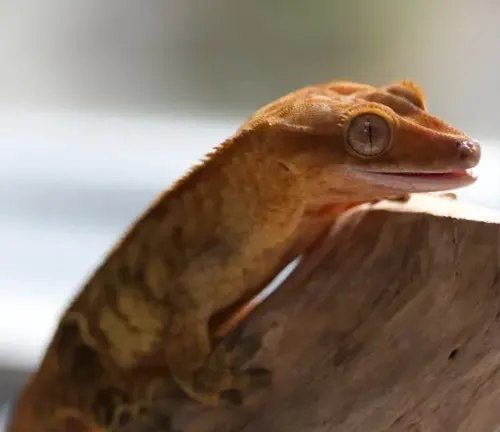

When choosing a Crested Gecko as a pet, it’s essential to select a healthy and well-adjusted individual to ensure a positive and rewarding experience. Here are some tips for choosing a Crested Gecko:
- Observe Activity and Behavior: Look for a Crested Gecko that is alert, active, and responsive. Avoid geckos that appear lethargic, have difficulty moving, or show signs of stress such as excessive hiding or aggression.
- Check Overall Appearance: Choose a gecko with clear eyes, smooth skin, and a well-rounded body. Avoid geckos with sunken eyes, wrinkled skin, or visible signs of injury or illness.
- Assess Body Condition: Opt for a gecko with a healthy body condition, neither underweight nor overweight. A healthy Crested Gecko should have a firm body with visible muscle tone and a rounded belly.
- Inspect Limbs and Tail: Check the gecko’s limbs and tail for any signs of injury, deformity, or retained shed. The limbs should be well-formed and free of swelling or abnormalities, and the tail should be intact and free of kinks or bends.
- Ask About Feeding and Health History: Inquire about the gecko’s feeding habits, diet, and health history from the breeder or seller. Choose a gecko that has been consistently eating well and has a clean bill of health.
Setting Up a Crested Gecko Habitat
Setting up a proper habitat for your Crested Gecko is crucial for its health and well-being. Here’s a guide to setting up a Crested Gecko habitat:
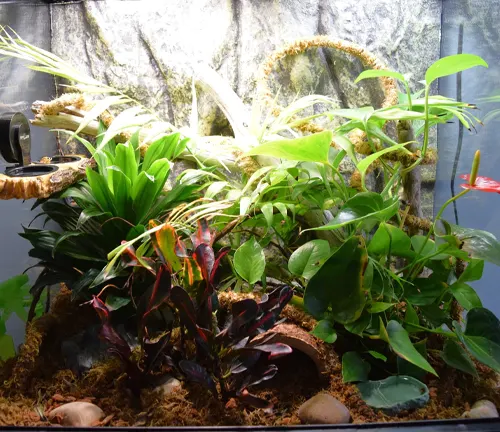
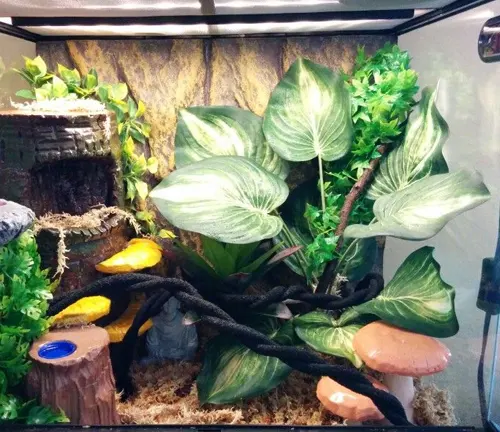
Enclosure:
- Choose a vertically oriented terrarium to accommodate Crested Geckos’ arboreal nature. A 20-gallon tall tank is suitable for one adult gecko.
- Ensure the enclosure has secure screen lids to provide ventilation while preventing escapes.
Substrate:
- Use a substrate that retains moisture while allowing for drainage, such as coconut husk fiber or organic potting soil. Avoid substrates that can cause impaction, such as sand or gravel.
- Add a layer of leaf litter or sphagnum moss to provide hiding spots and maintain humidity.
Temperature and Lighting:
- Maintain a temperature gradient of 72-80°F (22-27°C) during the day and a slight drop at night.
- Provide ambient lighting with a low-wattage LED or fluorescent bulb. Crested Geckos do not require UVB lighting but benefit from exposure to natural daylight.
Humidity:
- Maintain humidity levels between 60-80% to replicate the gecko’s natural rainforest environment.
- Use a hygrometer to monitor humidity levels and mist the enclosure daily with a spray bottle filled with dechlorinated water.
Hiding Spots and Decor:
- Offer plenty of hiding spots and climbing opportunities with branches, vines, and cork bark tubes.
- Incorporate live or artificial plants to provide cover and create a naturalistic environment.
- Include a humid hide filled with moist sphagnum moss to aid in shedding.
Water and Hydration:
- Provide a shallow water dish filled with dechlorinated water for drinking and soaking.
- Mist the enclosure daily to maintain hydration and humidity levels, especially during shedding.
Feeding and Diet:
- Feed Crested Geckos a balanced diet of commercially available Crested Gecko diet, supplemented with live insects such as crickets, dubia roaches, and mealworms.
- Offer fruit treats such as mashed bananas or pureed mangoes occasionally for variety.
- Dust food items with calcium and vitamin supplements several times a week to prevent nutritional deficiencies.
Maintenance
- Clean and spot-check the enclosure regularly to remove waste and uneaten food.
- Replace substrate as needed and clean water dishes and decor with a reptile-safe disinfectant.
- Monitor your gecko’s health and behavior closely and seek veterinary care if any issues arise.
Fun Facts About Crested Geckos
- Crested geckos can detach their tails as a defense mechanism, which will regenerate over time.
- They have specialized toe pads covered in microscopic hairs called setae, allowing them to climb smooth surfaces.
- Unlike many other reptiles, crested geckos have vocalizations and can make chirping or barking sounds.
Different Species
Rhacodactylus auriculatus
(Gargoyle Gecko)
Also native to New Caledonia, the Gargoyle Gecko is closely related to the Crested Gecko. It shares similar care requirements and is known for its bumpy appearance, resembling a gargoyle.
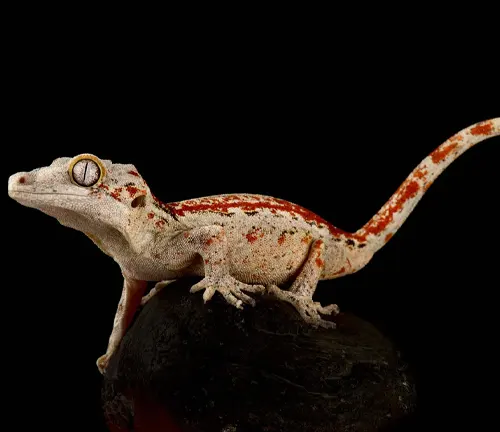
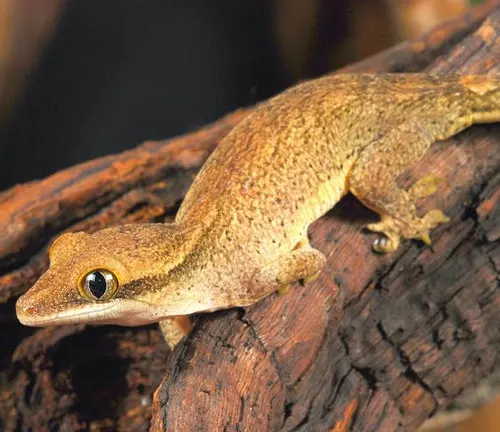
Rhacodactylus sarasinorum
(Sarasin’s Giant Gecko)
Found on the Isle of Pines in New Caledonia, this species is larger than the Crested Gecko and has a more elongated snout.
Rhacodactylus chahoua
(Mossy Prehensile-tailed Gecko or Chewie)
Another New Caledonian species, the Chewie is known for its moss-like appearance and prehensile tail, which it uses for climbing and grasping.
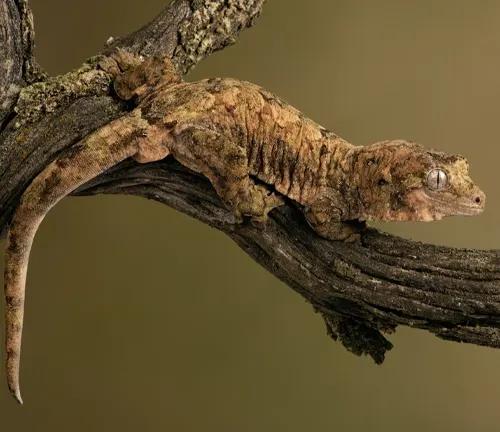

Rhacodactylus leachianus
(New Caledonian Giant Gecko)
The largest species in the genus, the New Caledonian Giant Gecko inhabits various islands in New Caledonia. It has a thick, robust body and is known for its impressive size and unique coloration patterns.
Frequently Asked Questions (FAQs)
- What do Crested Geckos eat?
Crested Geckos are omnivores and typically consume a diet consisting of commercially available Crested Gecko diet, supplemented with live insects such as crickets, mealworms, and dubia roaches. They may also enjoy occasional fruits such as mashed bananas or pureed mangoes. - How often should I feed my Crested Gecko?
Adult Crested Geckos should be fed every other day, while juveniles and hatchlings may require daily feeding. Offer a variety of food items to ensure a balanced diet. - Do Crested Geckos require UVB lighting? Crested Geckos do not require UVB lighting as they can obtain the necessary vitamins and minerals from their diet and artificial lighting. However, providing UVB lighting can benefit their overall health and wellbeing.
- What temperature and humidity levels are ideal for Crested Geckos?
The ideal temperature range for Crested Geckos is 72°F to 80°F during the day, with a slight drop at night. Humidity levels should be maintained between 60% and 80% to mimic their natural habitat. - How big of an enclosure does a Crested Gecko need?
A vertically oriented terrarium with dimensions of at least 18 inches in length, 18 inches in width, and 24 inches in height is recommended for a single Crested Gecko. - Can Crested Geckos live together in the same tank?
While Crested Geckos can live together peacefully, it’s essential to provide ample space, hiding spots, and monitor their behavior closely to prevent aggression. - Do Crested Geckos need a heat source?
Crested Geckos do not require a heat source as long as the ambient temperature in their enclosure remains within the recommended range. However, a low-wattage heat source can be provided if additional warmth is needed. - How often should I clean my Crested Gecko’s enclosure?
Spot clean your Crested Gecko’s enclosure daily to remove waste, and perform a full substrate change every few months to maintain cleanliness and prevent bacterial growth. - Do Crested Geckos require supplements in their diet?
Yes, Crested Geckos benefit from calcium and vitamin supplements, which should be dusted onto their food items several times a week to prevent nutritional deficiencies. - Can Crested Geckos be handled regularly?
Crested Geckos can be handled regularly but should be approached gently and with care to avoid causing stress or injury. Limit handling sessions to short periods to prevent excessive stress. - What substrates are safe for Crested Geckos?
Safe substrate options for Crested Geckos include coconut fiber, orchid bark, and paper towels. Avoid substrates that are dusty or prone to ingestion, such as sand or walnut shell. - Do Crested Geckos need hiding spots in their enclosure?
Yes, Crested Geckos require hiding spots in their enclosure to feel secure. Provide naturalistic hiding places such as cork bark tubes, hollow logs, or artificial caves. - Are Crested Geckos prone to any specific health issues?
Crested Geckos can be prone to health issues such as metabolic bone disease, respiratory infections, and stuck shed. Regular veterinary check-ups and proper husbandry practices can help prevent these issues. - How can I tell if my Crested Gecko is stressed?
Signs of stress in Crested Geckos include hiding more than usual, loss of appetite, excessive pacing or climbing, and changes in coloration or behavior. Providing a comfortable and enriching environment can help alleviate stress. - Do Crested Geckos vocalize or make any sounds?
Yes, Crested Geckos can vocalize and make sounds such as chirping or barking, especially during breeding or when feeling threatened. These vocalizations are a form of communication among geckos.


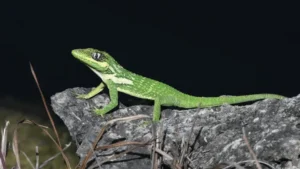
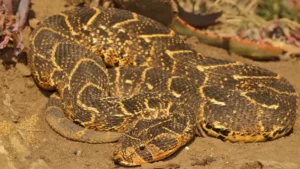

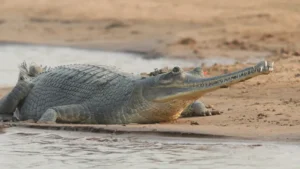

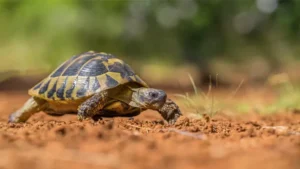
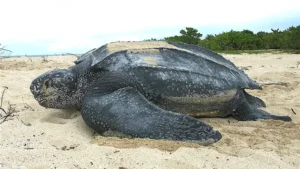

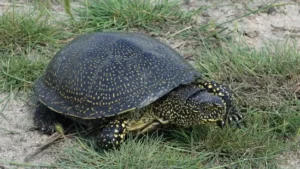

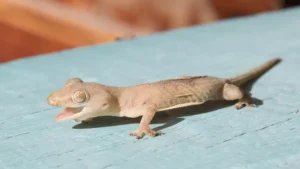

Leave your comment